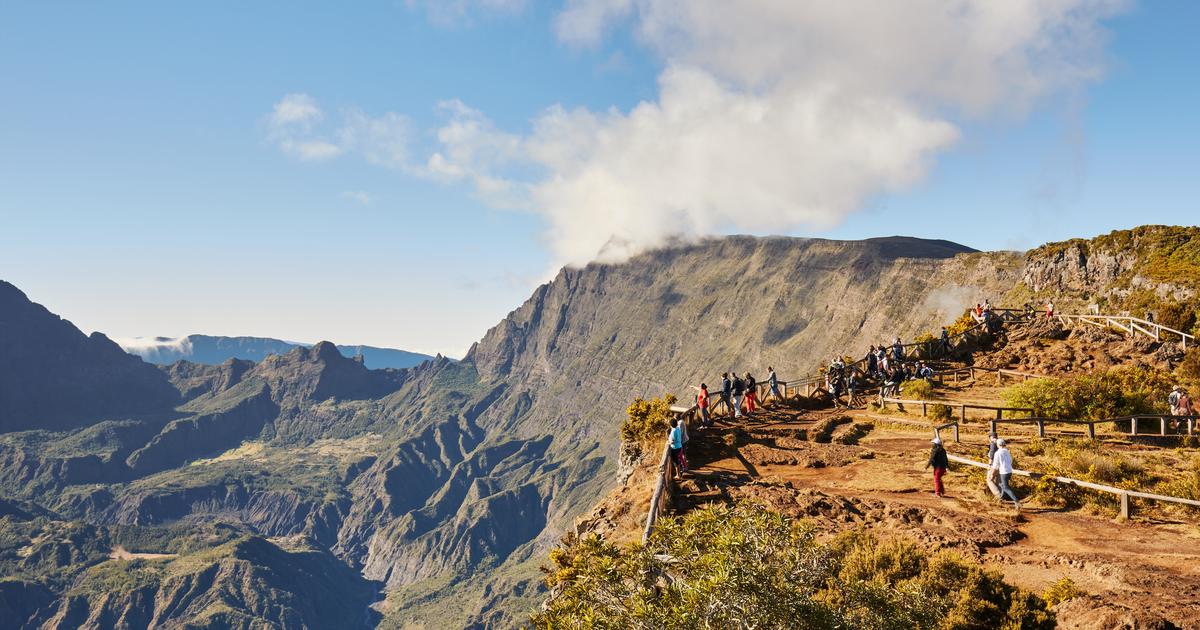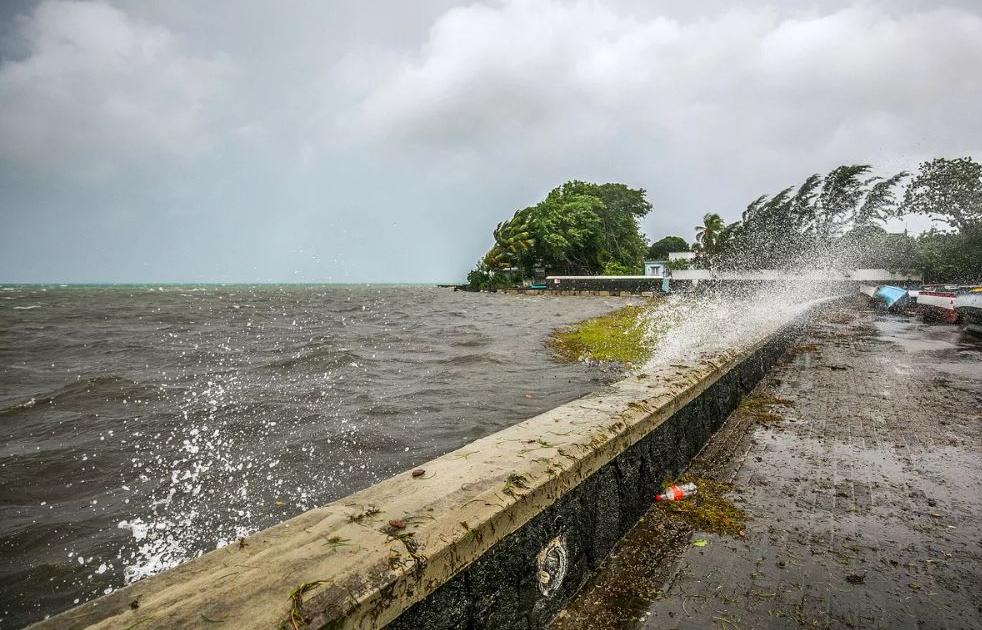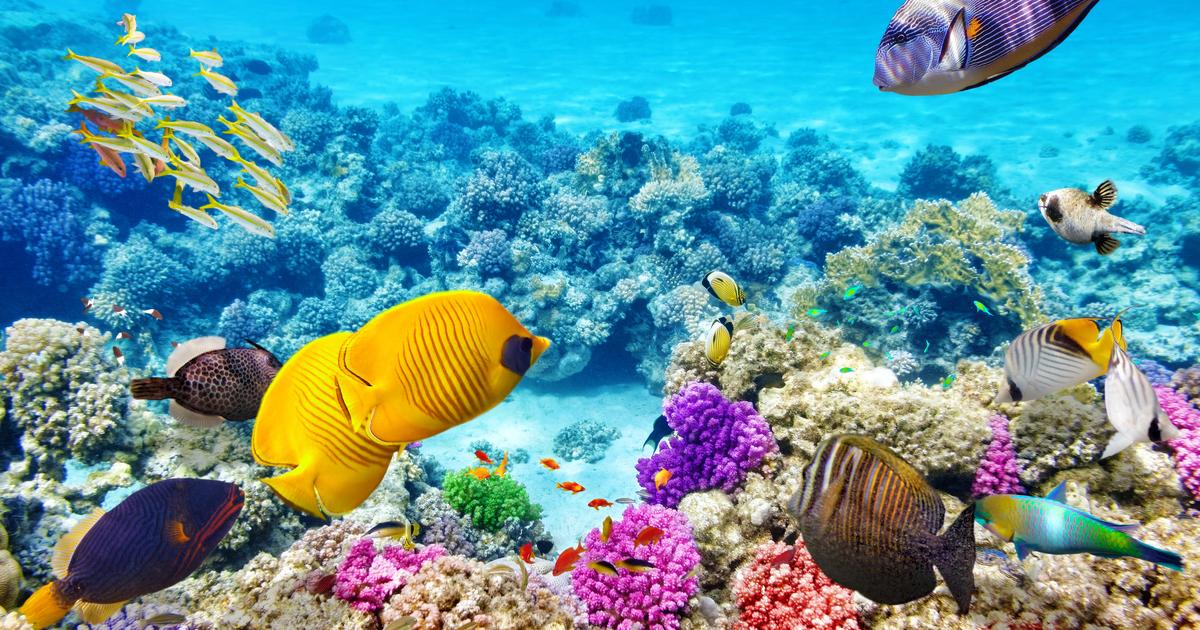Enlarge image
Christmas Island in the Indian Ocean: silhouette of an angry dog
Photo: DLR / picture alliance / dpa
It is December 24th in the year of the Lord, 1643, when the lookout of the "Royal Mary" calls out land.
The ship sails on behalf of the British East India Company in London, one of the most powerful trading companies in history, which consistently exploits colonies and calls it trade.
The coastline of the island is characterized by steep cliffs and overgrown by dense tropical forest - not very attractive.
Captain William Mynors sees no reason to look for a bay.
His ship sails past, but the seaman notes the sighting and position in the logbook and baptizes the island after the date: Christmas Island.
There are five islands with this name worldwide, but if you think of a lot of snow and log cabins and reindeer, you are wrong.
Only in Nova Scotia (Canada) is there a small Christmas island, over which it trickles quietly in the cold months and whose post office is very busy in December: fans from all over the world want the special stamp for the festival.
A trident in the waves
Two more "Christmas Islands" lie off the coast of Tasmania.
An atoll called Christmas Island, discovered in the Pacific by James Cook on Christmas Eve 1777, is now called Kiritimati and is part of the Kiribati archipelago in the Pacific.
The largest, however, is Christmas Island, which was first seen aboard the Royal Mary: volcanic origin, ten degrees of latitude from the equator, 220 nautical miles south of Java and 960 nautical miles north of Australia in the Indian Ocean.
With 135 square kilometers as big as Halle an der Saale, but only populated by 1,800 people today.
The average temperature is a cozy 28 degrees Celsius.
Here you wear shorts all year round instead of winter coats, but there is no beach.
You can only swim in a few places.
Christmas Island lies like a sharp-edged trident in the ocean waves.
It could also be the silhouette of an angry dog.
The first sailors to land on Christmas Island were part of the crew of the Englishman William Dampier (1651-1715), one of the greatest adventurers of all time, who today, strangely, sails under the radar of attention.
Dampier was an explorer, pirate, naturalist, controversial because of his crude leadership methods and the first person to circle the earth three times.
He saved the life of Alexander Selkirk (the historical template for Robinson Crusoe).
Fertilizer made the island interesting
According to his information about wind and current, the explorers Horatio Nelson and James Cook sailed, his reports inspired Alexander von Humboldt and Charles Darwin and led to the infamous expedition of the "HMS Bounty".
Dampier is associated with 80 terms in the Oxford English Dictionary, including "avocado", "barbecue" or "subspecies".
A storm drove Dampier to Christmas Island in March 1688 when he went off course on a ship belonging to the privateer Charles Swan on a voyage to the Cocos Islands.
Its landing on the west side is the first to be documented.
The island was first explored 169 years later, which indicates how complicated the journey was.
An English expedition tried in vain to reach the top of the island.
It was only when a captain named John Maclear discovered a cove that turned out to be a safe berth and called it "The Bay of Flying Fish" that ships and visitors came regularly.
They discovered pure phosphate lime, a popular fertilizer - which suddenly increased interest in Christmas Island.
On June 6, 1888, the British Crown annexed them and a mine began operations.
Nightmare for human rights defenders
During World War II, Japan attacked the island because of its natural resources and eventually occupied it.
After the war ended, Christmas Island returned to the UK, before being transferred to Commonwealth member Australia in 1958.
For a clear payment of £ 20 million to compensate for lost phosphate lime income.
You could say: an XXL Christmas present with a deductible.
Christmas Island also has a lot of beautiful things.
Divers, for example, rave about the underwater world, so untouched and rich in fish from perch to hammerhead shark, so few other tourists.
And there is a unique natural spectacle when countless red Christmas crabs wander around and go to the sea to lay their eggs.
The crab migration is the permissible, desired form of migration on Christmas Island, on which it remained quiet for decades - until Australia's migration policy made headlines, which, as is well known, has nothing to do with the commandment of Christmas charity.
Boats with refugees from Indonesia headed for the island again and again, and the right-wing political spectrum in Australia was always upset.
When in August 2001 the Norwegian ship »Tampa« tried to drop 438 people rescued from drowning, most of them Afghans, on the island, the government in Canberra simply refused entry into their territorial waters.
The fact that a special task force stormed the freighter caused international outrage and angry Norwegians.
No Christmas island fairy tale - a nightmare for human rights activists.
Merry Christmas?
Nope.
Australia prevented the castaways from entering Australian soil;
they were shipped to the tiny island nation of Nauru, with some reaching New Zealand.
Thereupon the dispute over the asylum policy really flared up, Australia introduced a rigid immigration detention and sent back boat people or took them to camps on the island of Manus, which belongs to Papua New Guinea, or Nauru.
In 2008, the government opened a large internment camp with almost 800 beds on the small Christmas Island and tried to deprive migrants of their protection status through legal maneuvers.
What thwarted the highest court in Australia.
Again and again migrants tried to reach the island despite all adversities.
48 drowned in December 2010 in the »Bay of Flying Fish« when their wooden boat crashed into a rock and sank.
The detention center was notorious for the deaths, rape and self-harm of desperate inmates.
In 2015 there was an uprising, asylum seekers temporarily took control.
It was closed in autumn 2018.
Enlarge image
The dreaded internment camp
Photo: REUTERS / Amnesty International
When the corona pandemic broke out, the Australian government remembered the distant Christmas Island.
Australian citizens who were in Wuhan and suspected of being infected were flown to Christmas Island in February 2020 and placed in quarantine for two weeks in the former detention center.
Merry Christmas?
That doesn't really apply to this island.















